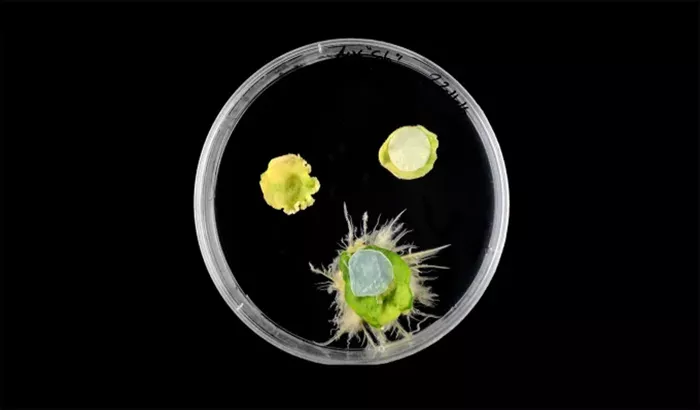A novel approach to plant care involves using bacteria-produced cellulose as a type of bandage to accelerate healing and regeneration in plants. This discovery could have significant implications for agriculture and plant research. The bacterial cellulose is biocompatible and biodegradable, with high water retention properties.
Plant biologist Núria Sánchez Coll and her team made the discovery while testing bacterial cellulose patches with silver nanoparticles to prevent infections in wounded plants. They observed that the treated wounds healed at a much faster rate, prompting them to investigate the underlying reasons.
In their experiment, they made small cuts on the leaves of two common lab plants. Half of the wounds were treated with bacterial cellulose “Band-Aids.” After a week, over 80% of the treated wounds had completely healed, compared to less than 20% of the untreated ones. Microscopic analysis confirmed that the tissues in the treated wounds appeared healthy, while the untreated wounds showed signs of distress and dehydration.
Furthermore, the team discovered that these patches significantly boosted plant regeneration, particularly in cloning experiments. Cuttings treated with bacterial cellulose in petri dishes developed roots and leaves more quickly than untreated cuttings. Interestingly, patches made from plant-produced cellulose did not have the same effect.
Upon chemical analysis, the bacterial cellulose was found to contain plant hormones, likely produced by the bacteria responsible for its synthesis. The researchers were surprised to find these hormones intact, even after sterilization of the patches. They believe the dense cellulose matrix protects the hormones, preserving their bioactivity.
The healing process triggered by the bacterial cellulose appears to differ genetically from the plant’s natural wound repair mechanisms. The bacterial cellulose activated a different set of genes, suppressing some typically involved in healing while activating others related to infection defense. This altered response is believed to be a result of the wound, the presence of bacterial hormones, and the plant’s reaction to the bacterial cellulose as a foreign substance.
This is the first time that bacterial cellulose has been found to have intrinsic biological activity. Plant scientists see considerable biotechnological potential in this discovery and are eager to see how it performs with real crops.
While still preliminary, these findings suggest various potential agricultural applications, such as aiding grafting, preserving cut plant material, and serving as a growth medium in labs. Additional research is underway to explore these findings at the molecular level and determine if they apply to other regeneration processes.


